Muqing Li
University of California San Diego
Graph Neural Network-Driven Hierarchical Mining for Complex Imbalanced Data
Feb 06, 2025



Abstract:This study presents a hierarchical mining framework for high-dimensional imbalanced data, leveraging a depth graph model to address the inherent performance limitations of conventional approaches in handling complex, high-dimensional data distributions with imbalanced sample representations. By constructing a structured graph representation of the dataset and integrating graph neural network (GNN) embeddings, the proposed method effectively captures global interdependencies among samples. Furthermore, a hierarchical strategy is employed to enhance the characterization and extraction of minority class feature patterns, thereby facilitating precise and robust imbalanced data mining. Empirical evaluations across multiple experimental scenarios validate the efficacy of the proposed approach, demonstrating substantial improvements over traditional methods in key performance metrics, including pattern discovery count, average support, and minority class coverage. Notably, the method exhibits superior capabilities in minority-class feature extraction and pattern correlation analysis. These findings underscore the potential of depth graph models, in conjunction with hierarchical mining strategies, to significantly enhance the efficiency and accuracy of imbalanced data analysis. This research contributes a novel computational framework for high-dimensional complex data processing and lays the foundation for future extensions to dynamically evolving imbalanced data and multi-modal data applications, thereby expanding the applicability of advanced data mining methodologies to more intricate analytical domains.
Optimized Unet with Attention Mechanism for Multi-Scale Semantic Segmentation
Feb 06, 2025



Abstract:Semantic segmentation is one of the core tasks in the field of computer vision, and its goal is to accurately classify each pixel in an image. The traditional Unet model achieves efficient feature extraction and fusion through an encoder-decoder structure, but it still has certain limitations when dealing with complex backgrounds, long-distance dependencies, and multi-scale targets. To this end, this paper proposes an improved Unet model combined with an attention mechanism, introduces channel attention and spatial attention modules, enhances the model's ability to focus on important features, and optimizes skip connections through a multi-scale feature fusion strategy, thereby improving the combination of global semantic information and fine-grained features. The experiment is based on the Cityscapes dataset and compared with classic models such as FCN, SegNet, DeepLabv3+, and PSPNet. The improved model performs well in terms of mIoU and pixel accuracy (PA), reaching 76.5% and 95.3% respectively. The experimental results verify the superiority of this method in dealing with complex scenes and blurred target boundaries. In addition, this paper discusses the potential of the improved model in practical applications and future expansion directions, indicating that it has broad application value in fields such as autonomous driving, remote sensing image analysis, and medical image processing.
E-commerce Webpage Recommendation Scheme Base on Semantic Mining and Neural Networks
Sep 11, 2024



Abstract:In e-commerce websites, web mining web page recommendation technology has been widely used. However, recommendation solutions often cannot meet the actual application needs of online shopping users. To address this problem, this paper proposes an e-commerce web page recommendation solution that combines semantic web mining and BP neural networks. First, the web logs of user searches are processed, and 5 features are extracted: content priority, time consumption priority, online shopping users' explicit/implicit feedback on the website, recommendation semantics and input deviation amount. Then, these features are used as input features of the BP neural network to classify and identify the priority of the final output web page. Finally, the web pages are sorted according to priority and recommended to users. This project uses book sales webpages as samples for experiments. The results show that this solution can quickly and accurately identify the webpages required by users.
Research on Disease Prediction Model Construction Based on Computer AI deep Learning Technology
Jun 23, 2024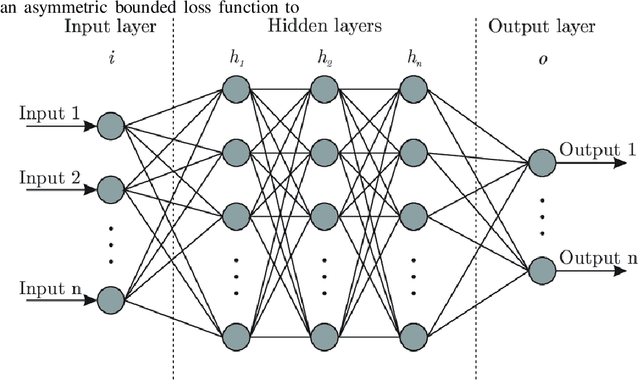


Abstract:The prediction of disease risk factors can screen vulnerable groups for effective prevention and treatment, so as to reduce their morbidity and mortality. Machine learning has a great demand for high-quality labeling information, and labeling noise in medical big data poses a great challenge to efficient disease risk warning methods. Therefore, this project intends to study the robust learning algorithm and apply it to the early warning of infectious disease risk. A dynamic truncated loss model is proposed, which combines the traditional mutual entropy implicit weight feature with the mean variation feature. It is robust to label noise. A lower bound on training loss is constructed, and a method based on sampling rate is proposed to reduce the gradient of suspected samples to reduce the influence of noise on training results. The effectiveness of this method under different types of noise was verified by using a stroke screening data set as an example. This method enables robust learning of data containing label noise.
Application of Computer Deep Learning Model in Diagnosis of Pulmonary Nodules
Jun 19, 2024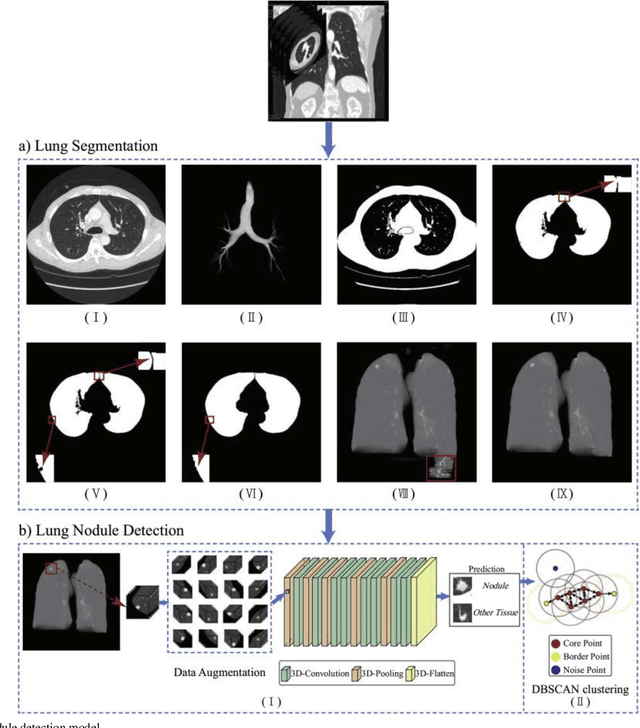
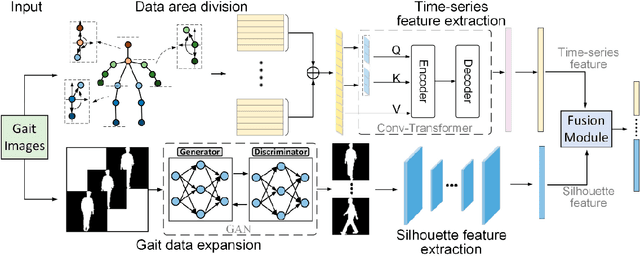
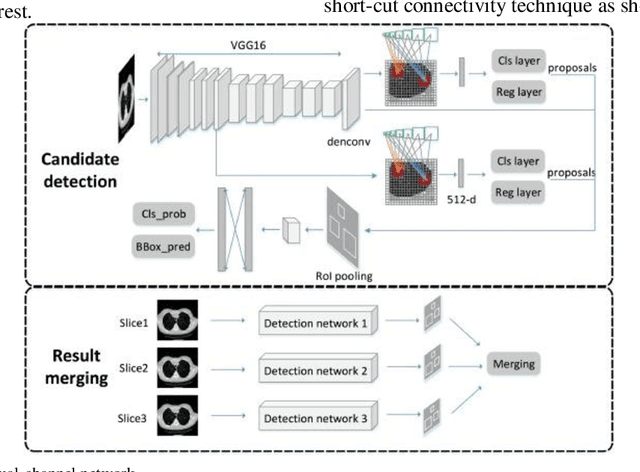
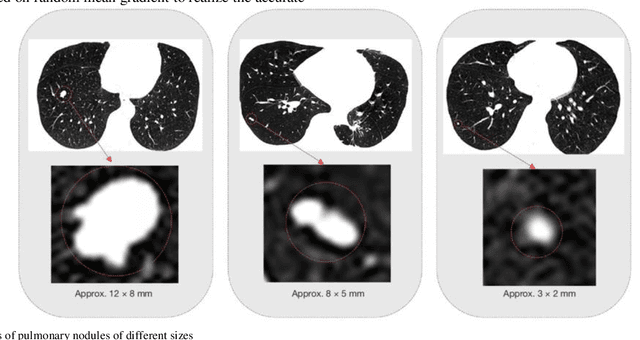
Abstract:The 3D simulation model of the lung was established by using the reconstruction method. A computer aided pulmonary nodule detection model was constructed. The process iterates over the images to refine the lung nodule recognition model based on neural networks. It is integrated with 3D virtual modeling technology to improve the interactivity of the system, so as to achieve intelligent recognition of lung nodules. A 3D RCNN (Region-based Convolutional Neural Network) was utilized for feature extraction and nodule identification. The LUNA16 large sample database was used as the research dataset. FROC (Free-response Receiver Operating Characteristic) analysis was applied to evaluate the model, calculating sensitivity at various false positive rates to derive the average FROC. Compared with conventional diagnostic methods, the recognition rate was significantly improved. This technique facilitates the detection of pulmonary abnormalities at an initial phase, which holds immense value for the prompt diagnosis of lung malignancies.
Exploration of Attention Mechanism-Enhanced Deep Learning Models in the Mining of Medical Textual Data
May 23, 2024



Abstract:The research explores the utilization of a deep learning model employing an attention mechanism in medical text mining. It targets the challenge of analyzing unstructured text information within medical data. This research seeks to enhance the model's capability to identify essential medical information by incorporating deep learning and attention mechanisms. This paper reviews the basic principles and typical model architecture of attention mechanisms and shows the effectiveness of their application in the tasks of disease prediction, drug side effect monitoring, and entity relationship extraction. Aiming at the particularity of medical texts, an adaptive attention model integrating domain knowledge is proposed, and its ability to understand medical terms and process complex contexts is optimized. The experiment verifies the model's effectiveness in improving task accuracy and robustness, especially when dealing with long text. The future research path of enhancing model interpretation, realizing cross-domain knowledge transfer, and adapting to low-resource scenarios is discussed in the research outlook, which provides a new perspective and method support for intelligent medical information processing and clinical decision assistance. Finally, cross-domain knowledge transfer and adaptation strategies for low-resource scenarios, providing theoretical basis and technical reference for promoting the development of intelligent medical information processing and clinical decision support systems.
High Efficiency Inference Accelerating Algorithm for NOMA-based Mobile Edge Computing
Dec 26, 2023Abstract:Splitting the inference model between device, edge server, and cloud can improve the performance of EI greatly. Additionally, the non-orthogonal multiple access (NOMA), which is the key supporting technologies of B5G/6G, can achieve massive connections and high spectrum efficiency. Motivated by the benefits of NOMA, integrating NOMA with model split in MEC to reduce the inference latency further becomes attractive. However, the NOMA based communication during split inference has not been properly considered in previous works. Therefore, in this paper, we integrate the NOMA into split inference in MEC, and propose the effective communication and computing resource allocation algorithm to accelerate the model inference at edge. Specifically, when the mobile user has a large model inference task needed to be calculated in the NOMA-based MEC, it will take the energy consumption of both device and edge server and the inference latency into account to find the optimal model split strategy, subchannel allocation strategy (uplink and downlink), and transmission power allocation strategy (uplink and downlink). Since the minimum inference delay and energy consumption cannot be satisfied simultaneously, and the variables of subchannel allocation and model split are discrete, the gradient descent (GD) algorithm is adopted to find the optimal tradeoff between them. Moreover, the loop iteration GD approach (Li-GD) is proposed to reduce the complexity of GD algorithm that caused by the parameter discrete. Additionally, the properties of the proposed algorithm are also investigated, which demonstrate the effectiveness of the proposed algorithms.
 Add to Chrome
Add to Chrome Add to Firefox
Add to Firefox Add to Edge
Add to Edge